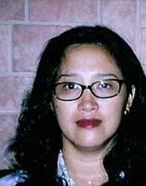 |
||
|---|---|---|
| CP Foundation | About CP Biennale | 2003 | 2005 | Contact Us | >||
           
|
||
|
There has been a long debate in the art world regarding the artist's focus on medium. Conventionally, the artist is seen as the central figure who puts the emphasis on ideas, and the ideas, therefore, take precedence over anything else. Such reasoning in turn creates a hierarchical view on skills and freedom from the dictate of the medium. In the further development, artists who base their works on the material aspect try to gain access to the art discourse by adopting the foundational artistic mind frame and by using the artistic means that have been conventionally recognized. The clay, in particular, easily records the artists' dealings and turn the final objects into an expressive medium for the artists. The artists also find it easy to use clay to copy various forms for their representational interests. The nature is strongly present in Noor Sudiyati's works. "Clay is a part of the soil," she says, "I want to re-present it in our daily lives." So she lets her works remain rough in the surface, sometimes she even puts some other materials such as sands on the surface. Glazure, which will certainly give an impression of a smooth coating, is out of the question. She creates forms that are the manifest of her intention to present the character of the soil. Sometimes she creates something that resembles a container, or an animal, plants, or simply a dollop. To a certain extent, the characters of clay--mushy, pliant, and even coarse--and her treatments on the material--attaching, piling, and pushing--"control" the final form. The form, therefore, is the result of material explorations. Noor Sudiyati's works rely on the experience of perceptive sensations on the part of the viewers. Such experience, which in the art discourse is known as the aesthetic experience, is not enthusiastically talked about in the art discourse of today. Strangely enough, however, many visual properties in a work of art are born out of the desire to explore the sensuous possibilities on the part of the spectators when they view the texture, lines, colors, or the engraving of the work. Apparently, this seemingly allergic behavior toward aesthetic experiences--which are identified with beauty--have blinded us to the dominant attitude of the Indonesian artists. Noor Sudiyati's works never try to hide from matters outside herself, nor does she try to find alibi in them. She is free from the hypocritical attitude of the Indonesian art world. Nurdian Ichsan Born on November 14, 1962 in Magelang, Central Java. SELECTED SOLO EXHIBITIONS SELECTED GROUP EXHIBITIONS |
||
|
CP Foundation | About CP Biennale | 2003 | 2005 | Contact Us
Jl. Suryopranoto 67A, Jakarta 10160, Indonesia. ph. +62.21.3448126, 3853206 | fax. +62.21.3853203, 3853208 info@cp-foundation.org |
||
 Noor Sudiyati sees clay as an opportunity to convey certain themes symbolically. For an artist who focuses on the use of one certain artistic medium, technical skills and the capability to reach a high visual quality with his or her work become the base to create the relations between the material and the various artistic means--be it expressive, aesthetic, representative, or formalistic. Noor Sudiyati's mastery with clay enables her to come up with unique idioms that eventually become her hallmark. She uses the coarse, rough, and earthy nature of clay to convey the impression of fragility and strength, of something transient and enduring at the same time.
Noor Sudiyati sees clay as an opportunity to convey certain themes symbolically. For an artist who focuses on the use of one certain artistic medium, technical skills and the capability to reach a high visual quality with his or her work become the base to create the relations between the material and the various artistic means--be it expressive, aesthetic, representative, or formalistic. Noor Sudiyati's mastery with clay enables her to come up with unique idioms that eventually become her hallmark. She uses the coarse, rough, and earthy nature of clay to convey the impression of fragility and strength, of something transient and enduring at the same time.